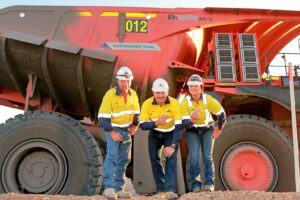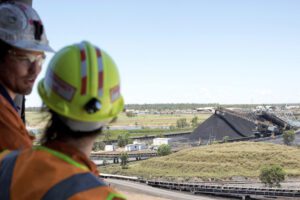Everyone has the right to feel physically and emotionally safe in a workplace culture, and workers aren’t the only ones that benefit from a stable environment, Mental Illness Fellowship of Queensland’s Tony Stevenson writes.
Over recent years, the spotlight has shined increasingly on the economic benefits of a healthy workplace versus a toxic one, and long gone are the days when people are told to “toughen up” when facing an adverse work environment.
With a credible body of evidence showing an undeniable link between bullying and psychological distress, depression, anxiety and chronic health conditions, employers should realise their social responsibility to ensure healthy workplaces.
However, if that’s not enough incentive, the statistics tell a compelling story that revolves around:
- Lower workplace productivity, disruption and low efficiency.
- Stress-related costs, including legal expenses, workers compensation payouts and rehabilitation costs that can result in increases in insurance premiums, staff turnover or increased absenteeism (it’s estimated that bullying is responsible for one in four resignations in Australia).
- Damage to an organisation’s reputation, brand and image.
Safe Work Australia has found that the average cost of a compensation claim due to workplace bullying or harassment is $41,700 and the average time lost from work was 25 weeks. The Productivity Commission also reports that each case of workplace bullying costs employers an average of $17,000 to $24,000 per year.
Bullying has significant flow-on effects for the wider community and Australia’s economy, with the Productivity Commission estimating the total cost of workplace bullying in Australia between $6 billion and $36 billion annually.
Additionally, the Commission estimated that replacing an employee costs around 75 per cent of their annual wage. All of these costs add up to a large investment with little to no return. These are costs every business or organisation can do without and they can be avoided by a relatively small investment in programs and initiatives that put workplaces on the right path.
It’s widely noted that every dollar spent on effective workplace mental health actions can generate $2.30 in benefits to an organisation. These benefits are largely derived from a reduction in absenteeism and compensation claims. Add increased productivity to the mix and taking action to build a healthy workplace is an obvious investment.
It’s not a straightforward undertaking and it does require considerable effort, but if you’re a manager, it’s part of the package – with specific legal obligations that require a targeted approach to manage individuals and ensure their experience at work is a positive one.
In turn, employees must take reasonable care for their own health and safety, and the health and safety of others who may be affected by their actions in the workplace.
Those who are being bullied should:
- Keep a record of exactly what has happened.
- Talk to someone they trust.
- Read the organisation’s bullying policies and procedures, to get the best possible understanding of the options.
- Seek advice from a manager, human resources, a health and safety representative, worker representative or an Employee Assistance Program.
The Department of Education, Employment and Workplace Relations says that workplaces that engage their employees effectively and listen to them tend to be more productive and more profitable than organisations that do these things poorly.
The Australian Institute of Employees Rights goes as far as to say “the quality of professional relationships is the single most important driver of excellence in workplaces. Therefore, investment in culture is a key strategy for employers to achieve quality working relationships and the elimination of negative outcomes such as bullying”.
READ RELATED CONTENT
This investment includes:
- Creating and implementing a workplace bullying prevention policy which clearly sets standards for workplace behaviour.
- Providing mandatory anti-bullying training and programs which are regularly monitored and include staff feedback.
- Implementing reporting and response procedures which are accessible to staff, are objective, fair and transparent, so that people feel supported when they raise an issue.
- Dealing with bullying as soon as an issue arises.
- Keeping abreast of state and federal laws.
- Designing and implementing a system of work with clear position descriptions, adequate resources, task-specific training and the ability to monitor workloads.
- Creating productive and respectful workplace relationships, including promoting positive leadership styles.
- Supporting the implementation of reasonable adjustment plans for anyone returning to the workplace that may have been adversely affected by bullying and harassment.
The best workplaces are those that value workplace culture that focus on treating all employees with dignity and respect and ensuring that employees are encouraged to raise concerns if they arise.
It’s pretty easy to see that instances of bullying can be a costly, complex distraction in the workplace, and the more that can be done to avoid issues the better.
No matter what industry you are in, promoting zero tolerance for inappropriate behaviour, and developing a workplace culture of respect, does lay the important groundwork. When it comes to managing a workplace’s most important resource – people.
PROFILE
 Tony Stevenson
Tony Stevenson
CEO, Mental Illness Fellowship
Queensland (MIFQ)
As the Chief Executive Officer of Mental Illness Fellowship Queensland (MIFQ) and an Executive of the Mental Illness Fellowship of Australia (MIFA), Tony Stevenson offers an insightful perspective into one of Australia’s most debilitating health and social issues. For more than 30 years, Tony has been committed to supporting viable and proactive health and community services which work alongside families and individuals to inspire self-confidence and hope.
He has been a Board Director of QCOSS and Families Australia, the principal consultant for the Council of Australian Governments (COAG) Reform of Children’s Services in Australia, a Sub-Committee Chair of the Australian Health and Community Services Ministerial Council, and Director of the Queensland Government’s Institutional Reform Secretariat.
“The best workplaces are those that value workplace cultures that focus on treating all employees with dignity and respect and ensuring that employees are encouraged to raise concerns if they arise.”














Add Comment